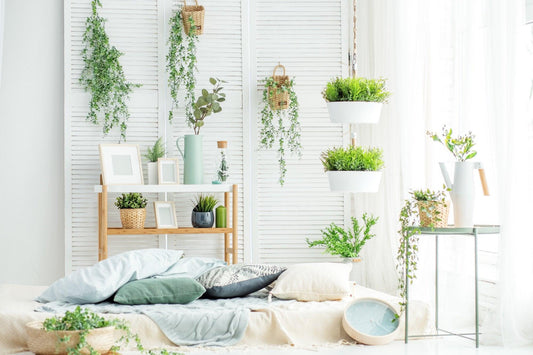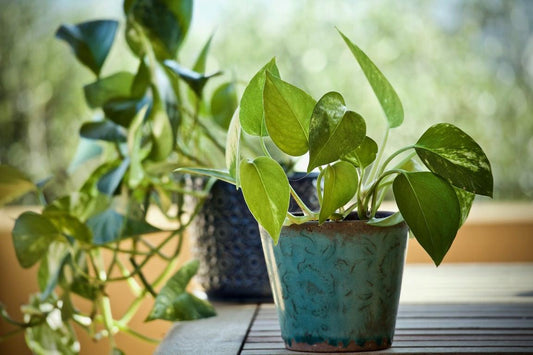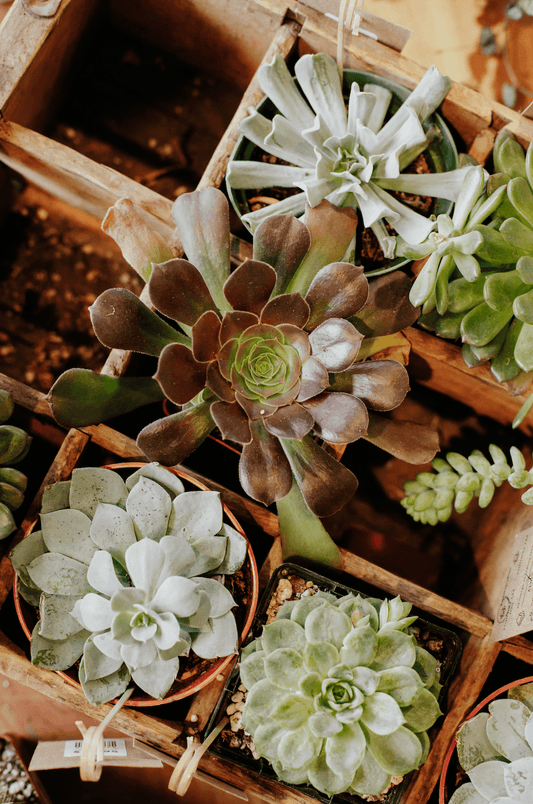BEGONIA
How to Care for the BEGONIA Plant
Overview
Easy to care for, and beautiful to look at, these cultivated plants are popular choices for both indoor and outdoor gardening. Known for both their leaf forms and blooms, they can be used as bedding plants or displayed in window boxes or hanging baskets, depending on the climate. There are over 1,000 species of Begonias, which come in countless colors, sizes, and shapes.


Profile
The fibrous types—aka wax Begonias—and tuberous types are the flowering species. Cane Begonias have tall stems and teardrop-shaped leaves. Rhizomatus types grow from a stubby stem, and produce stunning foliage with fuzzy variegated leaves that come in pink, purple, green, and yellow. Native to Brazil, Begonias do well in a variety of growing conditions and need little to thrive. They do best in partial shade and in moist, well-draining soil. They grow to a height of around 6 to 12 inches, to 1 to 3 feet, and spread out over 6-12 inches.
Begonias are easy to propagate. To do so, trim a stem cutting about 4 inches long, and plant into a moist potting mix, providing enough water and light. Propagation is also possible using the single leaf method if you are taking from a larger-leaved variety. Cut a mature leaf from the parent plant at the point where the leaf meets the stem, and plant this directly in soil as you would a node cutting. Though most of the Begonia’s toxic parts are underground, it’s best to keep them out of reach from your pets. These plants contain significant amounts of oxalate crystals, which cause vomiting in dogs and cats.




Low light
Select a spot that gets partial shade, or filtered light for your Begonias. Some varieties, such as wax Begonias, are more tolerant in direct sun, but prolonged exposure may burn the leaves and create damaged spots. They do best in humid environments with an average room temperature between 60-80°F.

Occasional
Their succulent-like stems help them store water, allowing you to go a little longer between waterings. Use distilled water when the top 50-75% of the soil is dry, making sure to let the liquid flow through the drainage hole at the bottom of the pot. Discard any water left sitting in the saucer. Note that this plant may be sensitive to the dissolved salts in tap water, and would prefer rain or distilled water.

Easy breezy
Begonias aren’t too picky when it comes to soil; choose a potting mix that drains well. Indoor Begonias require repotting when their tubers outgrow their current pot. Choose a pot that is an inch or so larger than the original, making sure there is an inch of space between the plant and the edge of the pot.
FREQUENTLY ASKED QUESTIONS (FAQs)
on Begonias
What causes stem rot in Begonias?
The primary culprit is fungi, which thrive in excessively wet soil. To avoid this, do not overwater and do not let your plant sit in a wet saucer.
Why is my Begonia suddenly wilting?
These plants have a tendency to wilt after you first bring them indoors. Plenty of plants suffer from this, but it’s highly common in Begonias. This is due to a sudden change in environment, with temperature, humidity, and lighting being major factors. To help your plant recover, place it in bright, indirect light and increase humidity. If the drooping persists, check for signs of root rot. You’ll then need to prune the diseased roots and replant it.
Why are there spots on the leaves of my Begonia?
Begonias are prone to fungal and bacterial diseases. These tend to develop rapidly, showcasing symptoms such as black and brown spots on the leaves and soft, wilting stems. You can save your plant by removing any affected areas with a clean knife or pair of scissors. Check for root rot before repotting the plant.




